Raspberry Pi 5: A Significant Upgrade in Performance and Features
The Raspberry Pi 5 marks a major leap forward for the popular single-board computer (SBC) series, offering enhanced performance, new features, and improved cooling solutions. Enthusiasts and developers will find much to appreciate in this latest iteration, which builds on the strengths of its predecessors while addressing some of their limitations.
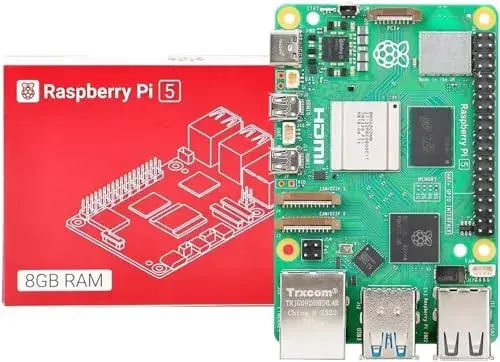
Benchmarks and Performance
The Raspberry Pi 5 exhibits substantial improvements in benchmarks, delivering up to 2-3 times faster CPU and GPU processing power compared to the Raspberry Pi 4. The quad-core Arm Cortex-A76 processor, clocked at 2.4GHz, and the 12-core VideoCore VII GPU significantly enhance both single-core and multi-core performance. In most tests, the Pi 5 outperforms the Pi 4 by a considerable margin, making it a powerhouse for tasks ranging from everyday computing to more demanding applications.
Cooling and Overclocking
One of the standout features of the Raspberry Pi 5 is its revamped cooling system. The inclusion of a fan and a heat sink ensures that the board maintains safe operating temperatures even under heavy loads. While overclocking the Pi 5 is possible, users should be aware that it increases power consumption and heat output. However, with the new cooling system, the Pi 5 manages heat more effectively than its predecessors, making overclocking a viable option for those who need extra performance.
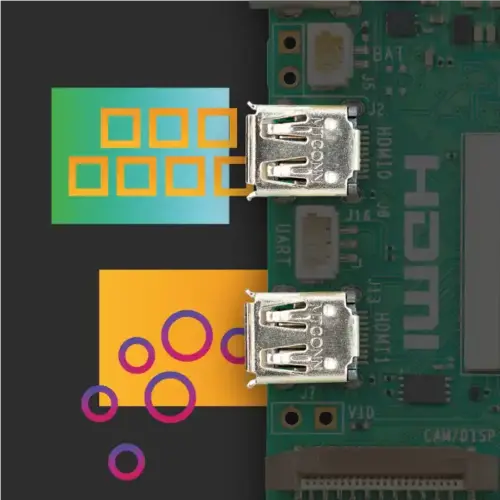
Power Consumption
The Raspberry Pi 5's power consumption is slightly higher than that of the Pi 4, with idle power draw around 4.7W. Under heavy load, this can increase to approximately 14.2W. While this represents an increase, the performance gains and new features justify the higher power consumption for many users. It’s essential to consider power requirements, especially for projects where power efficiency is crucial.
New Features
The Raspberry Pi 5 introduces several new features that enhance its versatility and usability. A new USB-C port supports both power delivery and data transfer, providing greater flexibility for powering and connecting peripherals. Additionally, the board includes a dedicated power button and a real-time clock (RTC) chip, which are significant improvements for users who need precise timekeeping and convenient power management. The two micro HDMI ports can support dual 4K displays at 60Hz, opening up new possibilities for multimedia applications and multitasking.
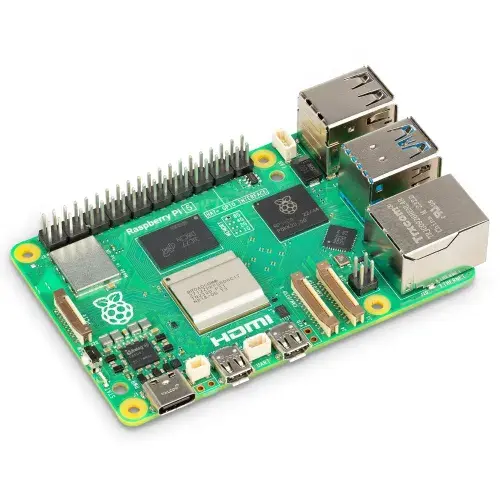
Raspberry Pi 5 Technical Specification Table
| Feature | Description |
|---|---|
| Processor | Quad-core ARM Cortex-A76 |
| Clock Speed | Up to 2.0 GHz |
| GPU | VideoCore VI |
| RAM Options | 2GB, 4GB, 8GB LPDDR4-3200 SDRAM |
| Storage | microSD card slot |
| Networking | Gigabit Ethernet |
| WiFi | Dual-band 802.11ac (2.4 GHz and 5.0 GHz) |
| Bluetooth | Bluetooth 5.0 |
| USB Ports | 2 x USB 3.0, 2 x USB 2.0 |
| Display Interfaces | 2 x micro HDMI (supports 4K resolution) |
| Camera Interface | 2-lane MIPI CSI |
| Audio Output | 3.5mm audio jack, HDMI |
| Power Supply | 5V via USB-C |
| GPIO | 40-pin GPIO header |
| Other I/O | 2 x I2C, 2 x SPI, 4 x UART |
| Video Output | 2 x micro HDMI (supports dual 4K resolution) |
| Audio Input | I2S audio input |
| Peripheral Interface | 2-lane MIPI DSI display port |
| Camera Connectivity | 2 x MIPI camera ports |
| Cooling | Active cooling recommended |
| Operating Temperature | -20°C to 70°C |
| Dimensions | 85.6mm x 56.5mm x 17mm |
| Weight | 45g |
| Software | Supports Raspberry Pi OS and other Linux-based distributions |
| Power Consumption | Varies depending on workload |
| Security | Secure boot, hardware encryption |
| Peripheral Support | Support for various sensors and HATs (Hardware Attached on Top) |
| USB Boot | Yes, supports USB mass storage boot |
| Operating System | Raspbian, Ubuntu, and other ARM Linux distributions |
| Flash Memory | No onboard flash memory (uses microSD for storage) |
| PWM Channels | 16 |
| Real-Time Clock | No built-in RTC |
| Reset Button | Yes, onboard reset button |
| Compliance | CE, FCC, and other regional certifications |
| Power Modes | Low-power sleep modes available |
| Expansion Options | Compatible with various expansion boards and accessories |
| User Guide | Extensive documentation and community support |
| DMA Controller | Yes |
| On-chip PLLs | 2 on-chip PLLs to generate USB and core clocks |
| Flash Memory Support | Up to 16MB off-chip via dedicated QSPI bus |
| Interpolator Peripherals | Yes |
| Integer Divider Peripherals | Yes |
| USB | USB 1.1 controller and PHY, with host and device support |
| PIO State Machines | 8 PIO state machines for custom peripheral creation |
| Bootloader | USB UF2 bootloader for easy firmware updates |
| Programming Languages | C/C++, MicroPython, CircuitPython |
| ADC Channels | 4 (3 exposed) |
| Logic Level | 3.3V for GPIO (not 5V tolerant) |
| Analog Inputs | 3 (one ADC channel is not exposed) |
| Digital Inputs/Outputs | 25 GPIO pins |
| Programming Tools | Philhower Arduino core, official C/C++ SDK, Visual Studio Code integration |
| Community Support | Large community with extensive tutorials and project ideas |
| Peripherals Supported | Multiple sensors, displays, HATs, and other accessories |
| Power Management | Programmable LDO for core voltage, various power-down modes |
| External Interfaces | GPIO, SPI, I2C, UART, PWM, ADC |
| Boot Select Button | BOOTSEL button for USB mass-storage mode |
| Single LED | Green LED on GP25 |
| Programming | Drag-and-drop programming via USB |
| Documentation | Detailed documentation and datasheets available |
| Official Accessories | Compatible with official Raspberry Pi accessories and add-ons |
| Community Projects | Wide range of community-contributed projects and examples |
| Education | Supported by educational materials and resources |
| Use Cases | Suitable for embedded systems, IoT projects, robotics, educational purposes |
| Programming Environments | Supports Arduino, MicroPython, CircuitPython, and more |
| Open Source | Board design files are open source, software is also open source |
| Additional Resources | Books, online tutorials, and courses available |
| GPIO Voltage Tolerance | 3.3V (not 5V tolerant) |
| Onboard Storage | 2MB QSPI Flash |
| Clock Speed Adjustability | Can be overclocked (with increased power consumption and reduced lifespan) |
| Pinout | Detailed pinout diagram available |
| Machine Learning | Supports TensorFlow Lite for machine learning applications |
| Expansion Header | 40-pin header for HATs and other add-ons |
Recommendation: For Enthusiasts and Developers
The Raspberry Pi 5 is ideal for those who need a powerful and versatile single-board computer for various projects. Its improved performance and new features make it a standout choice for developers and DIY enthusiasts. However, those with budget constraints or limited power supply options might consider the Raspberry Pi 4 or other alternatives. The Pi 5’s enhancements justify its higher price, but it may not be the best fit for every project.
Great for DIY Enthusiasts
For DIY enthusiasts, the Raspberry Pi 5 offers a robust platform with extensive community support and a wealth of accessories. The powerful Arm Cortex-A76 CPU, dual monitor support, and a dedicated power button provide the flexibility needed for creative and complex projects. However, its higher price and potential thermal issues without proper cooling are considerations that users must keep in mind.
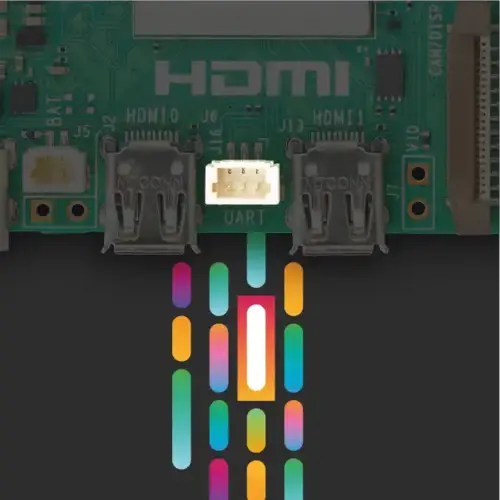
Limited Availability and Stock Issues
One of the significant challenges with the Raspberry Pi 5 is its limited availability. As of its release, the device is frequently out of stock at major retailers, making it difficult for interested buyers to acquire one. Pre-order options are available through some resellers, but the high demand and limited supply have created a scarcity that frustrates potential users.
Enhanced Design and Port Layout
The Raspberry Pi 5 maintains the compact form factor of its predecessors while introducing changes in port layout and additional features. The relocation of the Ethernet and USB ports, the new PCIe Gen 2.0 interface, and the inclusion of a power button and RTC chip enhance its functionality. These design improvements make the Pi 5 more versatile and easier to integrate into various projects.

Software and Operating System
The Raspberry Pi OS, based on Debian 12 (Bookworm) with Linux 6.1 Kernel, provides a user-friendly and highly optimized operating system for the Pi 5. The initial setup is straightforward, and the OS includes all the necessary tools and applications to maximize the board's potential. While some adjustments may be needed for optimal display settings, the Raspberry Pi OS offers a smooth and responsive user experience.
Performance in Real-World Applications
In real-world applications, the Raspberry Pi 5 excels in various tasks, from everyday computing to specialized projects. Its improved CPU and GPU performance enable it to handle demanding applications, while the new cooling system ensures stability. The ability to run dual 4K displays and the expanded memory options make it a versatile tool for both casual users and professionals.
Final Verdict: An Exceptional Single-Board Computer
The Raspberry Pi 5 is a noteworthy upgrade in the Raspberry Pi lineup, delivering superior performance, enhanced features, and improved cooling. Despite its higher power consumption and price, it stands out as an exceptional single-board computer that caters to a broad range of needs. For those seeking a powerful, versatile, and reliable SBC, the Raspberry Pi 5 is a top contender that lives up to the high expectations set by its predecessors.
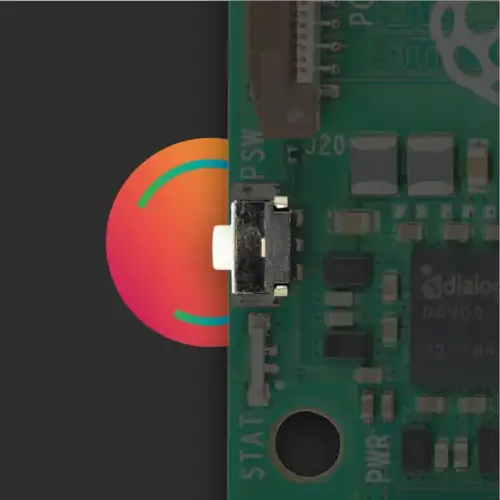
Conclusion: A Powerful and Versatile Choice
Overall, the Raspberry Pi 5 represents a significant upgrade, offering enhanced performance, new features, and improved cooling. While it comes with some limitations, such as higher power consumption and cost, it remains a strong choice for developers, DIY enthusiasts, and hobbyists. Its versatility and power make it suitable for a wide range of applications, from simple projects to complex computing tasks.
